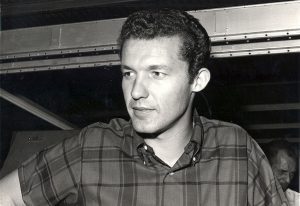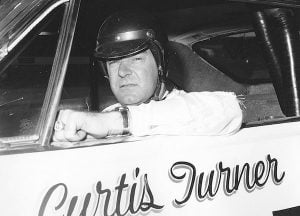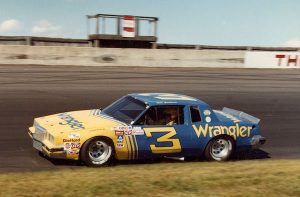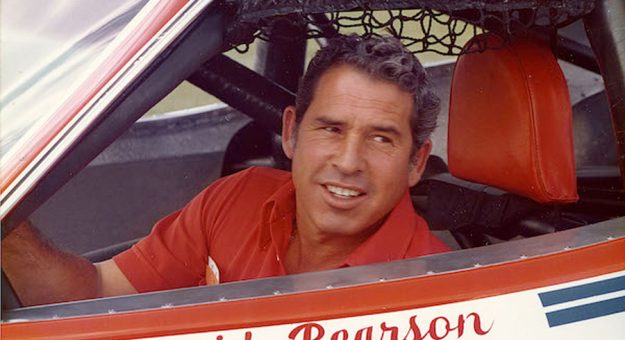As NASCAR prepares to celebrate its 75th anniversary throughout the new year, let’s look back at six major news stories that gave race fans reason to stop and take notice:
Oct. 31, 1965
During the first half of the 1965 racing season, Chrysler Corp. was in a major dispute with NASCAR concerning the hemi engine. Bill France, NASCAR’s founder, outlawed the engine at the beginning of the year and the auto manufacturer stopped supporting its factory teams.
In turn, Richard Petty and Petty Enterprises, Chrysler’s flagship operation, had no choice but to turn their efforts toward drag racing. Their Plymouth Barracuda sported the words, “43 Jr.” and “Outlawed” on its sides.
All short tracks and superspeedways on the schedule were reporting lower than normal advance ticket sales. Track executives were in dire straits. With few fans coming through their turnstiles, they faced certain financial doom.

After discussions regarding rules involving NASCAR and USAC stock car teams and continued talks with Chrysler, the hemi engine was once again allowed for use in Plymouth Belvederes and Coronets on tracks of one mile or less and road courses.
Track promoters celebrated the progress but needed one more incentive, that being the reinstatement of driver Curtis Turner back into NASCAR. Turner had been banned by France after trying to organize a union among NASCAR drivers in 1961. After much persuasion, France allowed Turner to return.
Turner received the news during a Grand-American race at Concord (N.C.) Speedway. He was in his Lincoln Continental equipped with a telephone when Bob Colvin, president of Darlington (S.C.) Raceway, gave him the news.
“Let’s get out of here,” Turner told his companions. “This is not a NASCAR track and from now on, I’m legal.” He later said, “I feel like a man that just got out of jail.”
Word of his pending return hit newspapers ahead of the Sept. 6 Southern 500 at Darlington. The buzz produced brisk ticket sales but Turner’s day turned dismal, as a wheel bearing sent him to the garage early. Turner ran two races in Junior Johnson’s Ford and three races for Wood Brothers Racing before taking the No. 21 Wood Brothers Ford to his 17th and final NASCAR victory at Rockingham Speedway on Oct. 31. Turner died in a private airplane crash on Oct. 4, 1970.
Nov. 25, 1968
After 10 years with Chrysler under the Plymouth banner, Richard Petty and Petty Enterprises announced a switch to Fords beginning with the Motor Trend 500 at Riverside (Calif.) Int’l Raceway on Feb. 1, 1969.
It was a bombshell announcement, considering the Lee and Richard Petty had enjoyed all their wins and championships with Chrysler products. Up to that point, they had amassed 145 victories and five NASCAR Cup Series titles.
“Ford has a vast storehouse of knowledge,” Petty said during the press conference at the Petty Enterprises complex in Level Cross, N.C. “Much more than Chrysler has. The name of the game is money…my relationship with Ford is on a year-to-year basis. I won’t be getting much more money than I was getting with Chrysler. But I feel the potential for winning more money is much, much greater with Ford.”
Petty won 10 races in 1969, earned six poles and finished second in points to David Pearson, driver of the Holman Moody Ford. Petty returned to Chrysler and drove Plymouths in 1970.
January, 1977
After driving Mercurys for team owner Roger Penske in 1976, Bobby Allison elected to field the American Motors Corp. Matadors out of the shop in Hueytown, Ala.
While driving for Penske in 1974 and ’75, Allison won four Cup Series races with the AMC brand. In 29 starts during 1977, he managed only 15 top-10 finishes. The Matador was an underdog and a fan favorite but did not live up to the hype it produced.
“I had incredible faith in the Matador and won more races in the car than any other driver,” Allison said. “When I tried to race the car myself in ’77, we just didn’t have the performance we needed to make it competitive on a week-to-week basis. It ran great for the majority of the races but inevitably engine issues would send me to the garage with just a few laps to go. We worked day and night to make it a success, but it just didn’t perform like we hoped. I have to say we had a lot of support from the fans for the Matador and I did enjoy that part of the deal.”

April 8, 1979
One of the most shocking stories of the 1970s came two days after the Rebel 500 at Darlington Raceway.
Aside from the fact that Darrell Waltrip and Richard Petty had put on one of the most intense races in the history of the 1.366-mile track with Waltrip winning, David Pearson’s departure from Wood Brothers Racing stole the headlines. Pearson pitted and lost two left-side wheels on lap 302 of the 367-lap race. Pearson’s No. 21 Mercury was heavily damaged and out of the race.
By mid-week, newspaper headlines read, “Pearson Fired from Wood Brothers Ride.” Pearson had won 43 races in eight seasons with the team. Team owner Glen Wood called Neil Bonnett to replace Pearson, finding him at an Indy car test at Indianapolis Motor Speedway.
For years, Pearson and the Wood brothers deeply regretted the parting.
“It wasn’t about the tires. We were about to break up anyway,” Pearson recalled during a Scene Vault podcast. “We had gotten to where we argued about small things that didn’t matter what it was. That’s usually what happens … we (weren’t) winning. I heard they were blaming me and I also heard that they said I (was blaming them) which they were getting information from the wrong man because I have never said anything about the Wood Brothers about them being bad or anything being their fault or anything like that.
“To me, they are the greatest people that I ever drove for. The whole family is just as nice as they could be.”
Pearson returned to Darlington in September 1979 as a replacement driver for injured Dale Earnhardt in Rod Osterlund’s Chevrolet and won the Southern 500. It was the perfect Cinderella comeback story.
Pearson’s 105th and final victory came in Hoss Ellington’s Chevrolet in April 1980 at Darlington. Pearson retired from driving in NASCAR competition in 1986. The three-time Cup Series champion died on Nov. 12, 2018.
Aug. 16, 1981
Late in the 1981 NASCAR Cup Series season, defending champion Dale Earnhardt moved to the No. 3 Pontiac fielded by owner/driver Richard Childress.

The second-generation racer left the No. 2 operation after friction developed between Earnhardt at new team owner J.D. Stacy.
“In the late 1970s, I could see the future coming with (team owners) Warner Hodgdon, Rod Osterlund, M.C. Anderson and Harry Ranier putting a great deal of money into it,” Childress said. “I was used to top-10 finishes but all the sudden I found myself running 12th or 15th and it just wasn’t fun for me anymore. I knew if I wanted to stay in the sport, I had to find a driver to continue doing it. So, I got out of the car and put Earnhardt in it for 10 races.”
Earnhardt raced elsewhere in 1982 and ’83, but returned to RCR in 1984 and remained there for the next 17 years. He went on to collect 67 of his 76-career wins with Childress as well as six of his seven Cup Series titles.
Sadly, Earnhardt died in a crash on the final lap of the 2001 Daytona 500.
January, 1985
Wood Brothers Racing was back in the headlines when Kyle Petty was signed as the team’s newdriver. The significance of their union was the fact his father, seven-time Cup Series champion Richard Petty, and former Wood Brothers Racing driver David Pearson, had enjoyed one of the sport’s most storied rivalries.
Kyle Petty collected his first of eight-career victories with the team at Richmond (Va.) Raceway in 1986. Petty also won the Coca-Cola 600 with the team at Charlotte Motor Speedway in 1987.
“I enjoyed driving for the Wood Brothers. That’s just the way it worked out, even with all the racing history between families,” Petty said. “We won at Richmond, which was crazy when Darrell Waltrip and Dale Earnhardt crashed while racing for the win and crashed a ton of cars in the process and we made it through. I looked across the infield and saw them wrecking. That’s how far behind I was, about half-a-track.
“Then, we win the 600 at Charlotte in ’87 with a great car,” Petty added. “The funny story there was I won the race and that night, I left the track and ran out of gas on I-85 in Salisbury (N.C.). I had a winner’s check and a winner’s trophy for winning one of NASCAR’s biggest races but had no gas to get home. I ended up getting a ride.”
